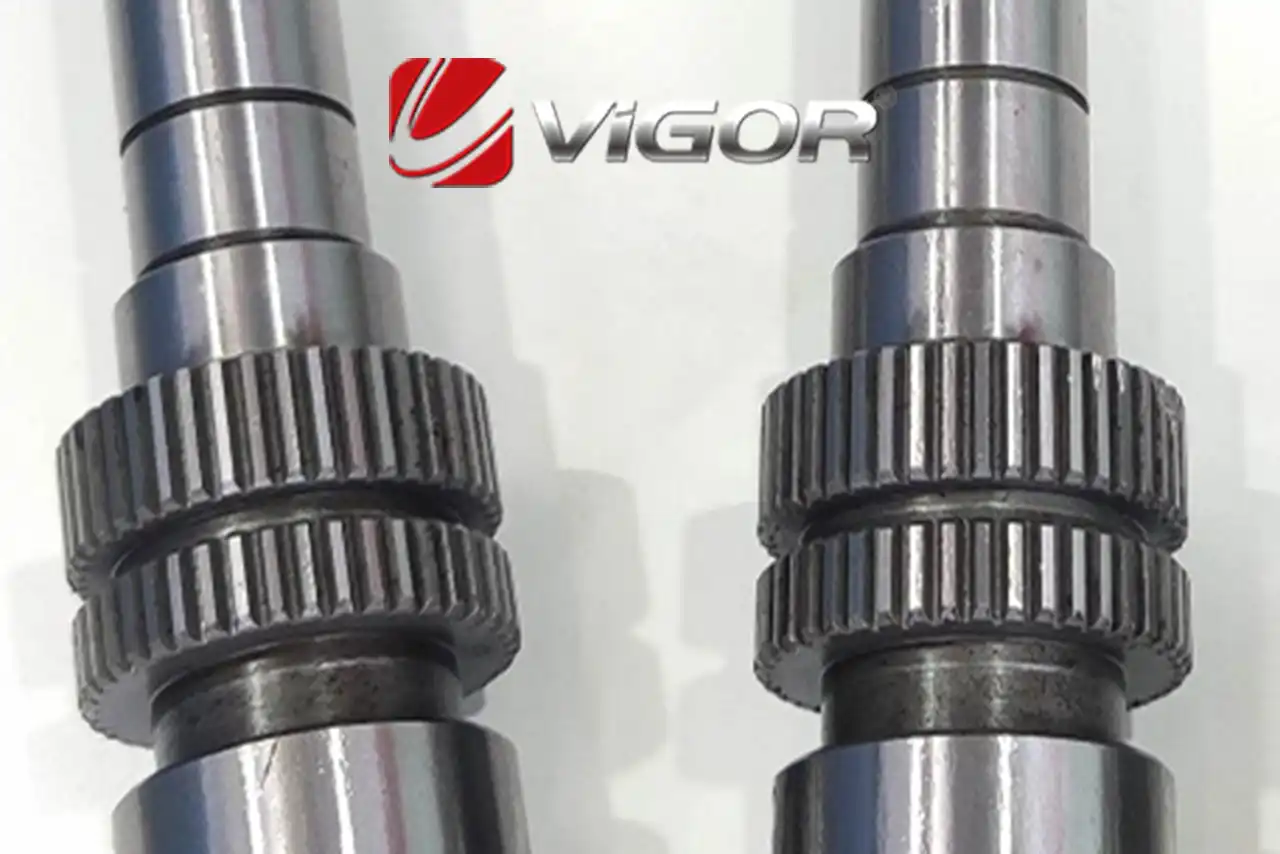
Knowledge
What are the manufacturing processes for spline shafts?
Spline shafts are critical components in a wide range of industries, from automotive and aerospace to heavy machinery and robotics. These shafts transmit torque and rotational motion while ensuring precision and durability in demanding environments. But how are spline shafts manufactured to meet these high-performance requirements? The manufacturing processes for spline shafts involve several techniques, including forging, machining, and casting, each chosen based on the application's specific needs. In this article, we'll explore these processes in detail, helping you better understand how spline shafts are designed and produced to ensure optimal quality and performance.

Forging Process for Spline Shafts
Forging is one of the most widely used methods for manufacturing spline shafts, especially when strength and durability are top priorities. This process involves shaping the metal using compressive forces, typically through hammering or pressing. Forging can be performed at various temperatures, with hot forging being the most common for spline shafts due to its ability to produce strong and defect-free components.
Hot Forging and Its Benefits
Hot forging involves heating the metal above its recrystallization temperature to make it malleable. This allows the material to be shaped with precision while improving its mechanical properties. For spline shafts, hot forging enhances grain structure, increases strength, and reduces the risk of cracks or defects. This process is ideal for heavy-duty applications, such as automotive transmissions and industrial machinery.
Closed-Die Forging for Precision
Closed-die forging is a specific type of hot forging used for spline shafts requiring high precision and complex geometries. The metal is placed between two dies, which are shaped according to the desired spline profile. This method not only ensures accurate dimensions but also minimizes material waste, making it an economical choice for production.
Post-Forging Heat Treatment
After forging, spline shafts often undergo heat treatment processes such as quenching and tempering. These treatments further enhance the material's hardness, toughness, and resistance to wear, ensuring the spline shaft can withstand demanding operating conditions over time.
Machining Techniques for Spline Shafts
Machining is an essential process for achieving the precise dimensions and surface finishes required for spline shafts. While forging provides the raw shape, machining refines it to meet exact specifications. This process is particularly important for applications requiring tight tolerances and smooth surfaces.
Gear Hobbing and Broaching
Gear hobbing and broaching are two common methods for cutting the splines into the shaft. In gear hobbing, a rotating cutting tool (hob) is used to gradually carve out the spline profile. Broaching, on the other hand, involves a toothed tool that cuts the splines in a single pass. Both methods ensure high accuracy and consistency, making them ideal for precision components.
CNC Machining for Complex Designs
Computer Numerical Control (CNC) machining has revolutionized the production of spline shafts by enabling the creation of complex designs with unmatched precision. Using advanced software, CNC machines can perform multiple operations, such as turning, milling, and drilling, in a single setup. This reduces production time while ensuring consistent quality.
Surface Finishing and Quality Control
After machining, the spline shaft undergoes surface finishing processes such as grinding or polishing. These steps remove any imperfections, improving the shaft's wear resistance and ensuring a smooth fit with mating components. Rigorous quality control measures, including dimensional inspections and material testing, are also conducted to ensure the shaft meets all specifications.
Casting and Other Specialized Methods
Casting is another technique used in the production of spline shafts, particularly for applications where cost-effectiveness is a priority. In addition, other specialized methods, such as additive manufacturing and powder metallurgy, are increasingly being explored for their unique advantages.
Sand Casting for Complex Shapes
Sand casting is a traditional method used to produce spline shafts with intricate shapes and larger dimensions. The process involves pouring molten metal into a sand mold, which is shaped according to the desired spline profile. While not as precise as machining, sand casting is a cost-effective option for producing large or custom spline shafts.
Investment Casting for High Precision
Investment casting, also known as lost-wax casting, offers higher precision than sand casting. This method involves creating a wax pattern of the spline shaft, which is coated with a ceramic shell. Once the wax is melted away, molten metal is poured into the cavity. Investment casting is suitable for complex geometries and smaller production runs.
Emerging Techniques: Additive Manufacturing
Additive manufacturing, or 3D printing, is an emerging method for producing spline shafts. While still in its early stages, this technique allows for rapid prototyping and the creation of complex designs without the need for traditional tooling. For spline shafts, additive manufacturing holds promise for custom, low-volume production.
Conclusion
Manufacturing spline shafts involves a combination of traditional and advanced techniques, each tailored to meet specific requirements for strength, precision, and cost-efficiency. Forging ensures exceptional durability, machining delivers precise dimensions, and casting provides an economical solution for complex shapes. As technology advances, emerging methods like additive manufacturing are expanding the possibilities for spline shaft production. By understanding these processes, you can make informed decisions when selecting the best manufacturing method for your application.
Contact Us
If you're looking for high-quality spline shafts or need assistance in choosing the right manufacturing process, the team at VIGOR INNO-TECH Limited is here to help. With over 18 years of experience in castings and forgings, we specialize in delivering customized solutions that meet the highest standards of quality and efficiency. Contact us today at info@castings-forging.com to learn more.
References
1. Manufacturing Processes for Machine Components: Forging, Machining, and Casting Techniques.
2. Advances in Additive Manufacturing for Industrial Applications.
3. Heat Treatment Processes and Their Impact on Metal Properties.
4. Precision Gear Manufacturing: Techniques and Quality Standards.
5. Applications of CNC Machining in Automotive and Aerospace Industries.
6. Material Science for Engineers: Properties and Processing of Metals.



